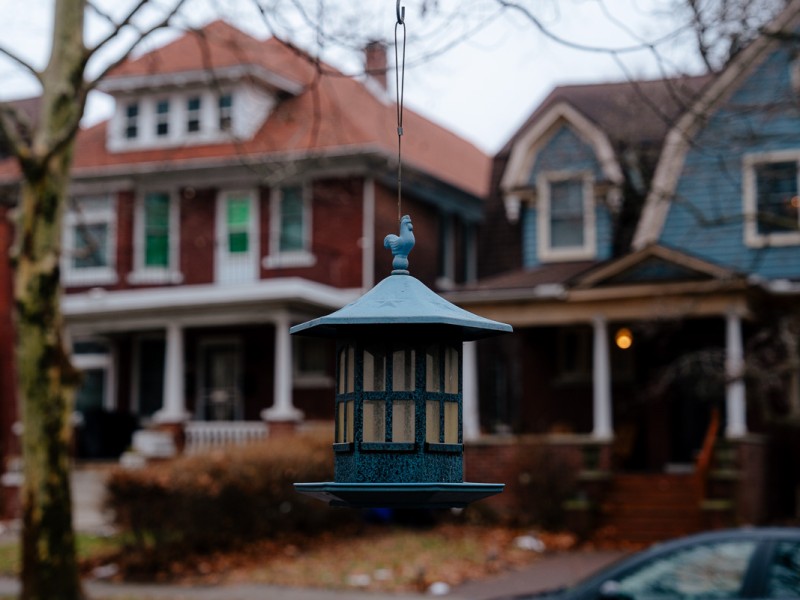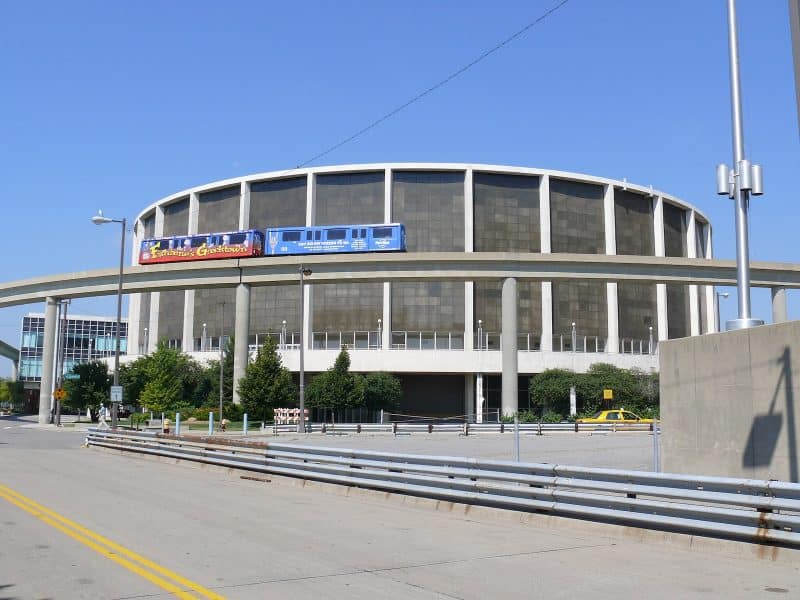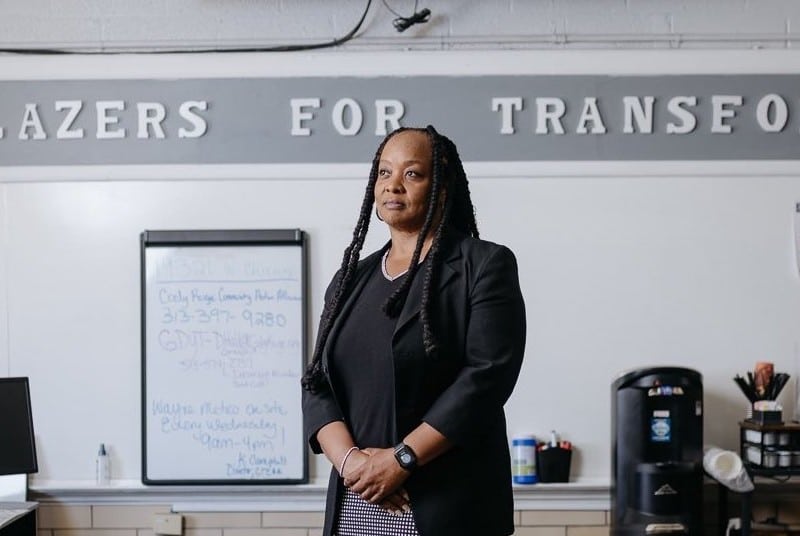The guardians of Martin Park: Two women work to revive their neighborhood in two different ways
The story of Martin Park, where it's been, where it is now, and where it's headed is being shaped by two women—one tied to its past and another grounded in the neighborhood's present.

If anyone can tell you about Martin Park, it’s Cheryl Kearney. An upbeat and fast talker, she can run down the names of her classmates and the businesses their parents owned when she still lived in the neighborhood.
She’s now the executive director of the Detroit Association of Planners, but before that she was a girl raised in Martin Park during its heyday—a neighborhood and childhood she describes as “idyllic”.
Martin Park is a hidden nugget of a neighborhood tucked at the intersection of Livernois and 6 Mile that’s somewhat dwarfed by the University of Detroit Mercy’s gated campus. The story of Martin Park, where it’s been, where it is now, and where it’s headed is being shaped by two women—one tied to its past and another grounded in the neighborhood’s present, who are working to make sure that Martin Park’s future is not overlooked as the surrounding neighborhoods are targeted for an economic rebound.
Rekindling the past
Kearney moved to Martin Park in 1962 at the age of seven, and remembers the closeness and safeness she felt in her community from that time. “The neighborhood was very insular and very cohesive,” she says. “Nobody at my house had a key except for my godfather. Nobody locked their doors—that’s how safe it was.”
As Kearney describes it, The Martin Park of her childhood was vibrant. The McDonald’s at 6 Mile and Livernois used to be the Art Deco Varsity Theatre. There was a dry cleaner, grocery store, pizza joint, and doctors’ offices. “Our neighborhood had everything we needed,” Kearney says.

Public education during that time was also good. Kearney is a product of Hally Middle School (now Paul Robeson/Malcolm X Academy), Mumford High School, and Detroit Mercy. “Everyone that I went to school with became a professional of some sort,” she says.
The stars of Motown lived in Kearney’s backyard. “We had Motown on our block. We used to go in the backyard at [Temptations co-founder] Eddie Kendrick’s house and he’d play basketball with us.”
Life was good in this closely-knit neighborhood of middle- and working-class black folks, but changes soon came that tugged at the corners of its fabric. One such change was the closing off of Florence Street in order to enclose Detroit Mercy’s campus. Florence was a thoroughfare that extended all the way through Livernois, where Kearney and her playmates used to bike as children. While scholarships were offered to Martin Park residents as part of the street closure, the community was never the same. Neighbors were cut off from each other, and Kearney says, it “gave a divided flavor to the neighborhood.”
Next came the introduction of heroin into the community with returning veterans of the Vietnam war. After that, the crack epidemic of the 80s further destabilized the neighborhood. The final straw came when a well known, elderly neighborhood matriarch was tragically killed in her home.
Despite Martin Park’s rough turn, Kearney believes in the neighborhood. As an urban planner and former resident, she stays involved by attending community meetings to offer feedback and keeping tabs on the development happening in the area. She’s also exploring collaborations with organizations like Cooperative Capital, an alternative funding vehicle for residents to invest in their communities.
Her dedication is palpable in her work. “That’s my heart, that’s where I grew up,” Kearney says. “My love is for that neighborhood.”
Rooted in the present

If Cheryl Kearney is committed to the beauty of Martin Park’s past, then Denise Kennedy is firmly rooted in the beauty of Martin Park’s present. She is the president of the Princeton Street Block Club, a small but mighty collection of residents working to take care of the neighborhood at the block level.
Kennedy is quite a contrast from Kearney—she speaks in a methodical, New York-accent that’s been rounded off by decades of living in Detroit.
After moving to Martin Park in August 2014, she immediately began putting her 20 years of experience as a realtor to use by helming the block club. The first order of business? Getting her neighbors to understand what was going on in their neighborhood.
For example, when she announced at a community meeting that roughly 17 of the houses on the block were vacant, she says neighbors were initially stunned until they started to think about the lack of activity happening at some of the homes. “This is a very stable neighborhood, but still at the same time going down because of the foreclosure and financial crisis,” she says. “The challenge right now is to build up or renew the faith of the people who have been there for so long, and who have stayed when nobody else wanted to stay.”
One of the biggest things Kennedy does is provide her neighbors with information—she works diligently to keep residents abreast of news and updates happening in Martin Park and the surrounding areas, often paying for costs like supplies and copying out of her own pocket.
“I have found that to do business in the city of Detroit as a block club is really, really difficult,” she says. Red tape can get in the way of residents being able to take direct action on block-level issues, like needing a to be a 501c3 and community partner to purchase land in a specific neighborhood if one doesn’t own an adjacent property. “You don’t need all these obstacles to do good for your community.”
Denise Kennedy knows her block like a mother knows her child, and she is as vocal about the challenges of running her block club as she is committed to the neighborhood.
“In my mind’s eye I can tell you every single house on both sides of the street, almost every car that belongs to every house.” This meticulousness is necessary, particularly as she works to stave off and report any signs of vacancy, which can lead to squatters. Or worse.
With the initiatives like the Fitzgerald Project popping up nearby it is only a matter of time before Martin Park becomes attractive to newcomers, especially given its relatively stable community and solid housing stock. “The change is going to come quickly,” Kennedy says. She and others like Kearney are holding the line until that time comes.
And while they wait, they are making sure that living in Martin Park is good for the people who have been there through thick and thin.
This story is part of Model D’s “On the Ground” series, which gives voice to the community members, businesses, and developers who make the Live6 neighborhood come alive. Support for this series is provided by the Kresge Foundation.
All photos by Bree Gant.




